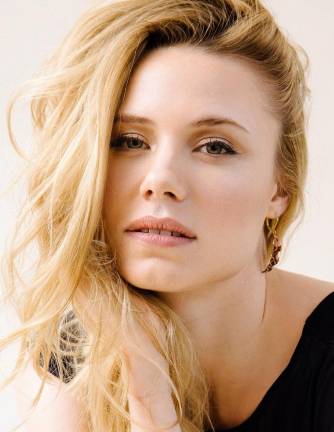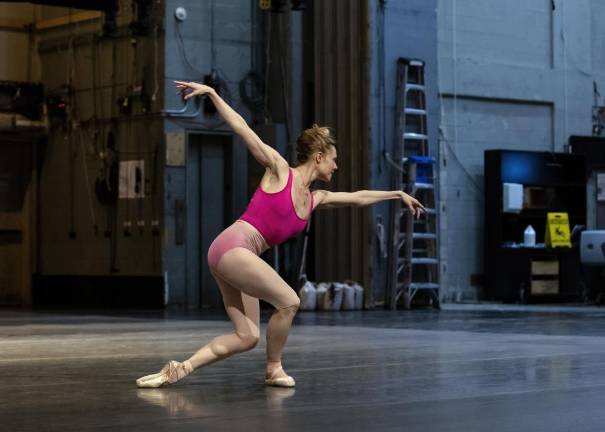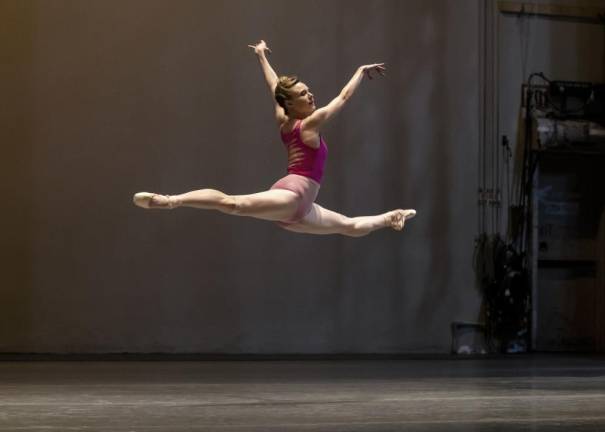Two weeks after Sara Mearns first moved to Manhattan, the city went through another devastating time, the tragedy of September 11. She was just 16 then, and had left her South Carolina home to dance with the School of American Ballet, her first leap towards a future career as a ballerina with New York City Ballet.
“That sort of, unfortunately, set a lot of us up mentally for what this is,” explained Mearns, who is now a principal dancer with the esteemed company. When the news came in March that the ballet would be shuttered, she and her husband, Broadway choreographer Joshua Bergasse, did not leave the city, but stayed in their Lincoln Center-area apartment. For Mearns, whose typical work day pre-COVID was up to 13 hours long, it has been difficult for her to get used to not being able to perform at her adopted home, the David H. Koch stage.
However, just last week, she was back at the theater for the first time since last March, documenting the surreal moment on her Instagram page with a post of her beaming on stage. “I didn’t want to leave and I sort of sat in my dressing room for a while afterwards, just because I wanted to be in that space and I don’t know when the next time is going to be,” she said.
The 35-year-old was filming content for New York City Ballet’s digital season, streaming this February to May online. The virtual programming will kick off on Feb. 22 with “Three Sides of Balanchine,” featuring Mearns dancing the leading role in “Stravinsky Violin Concerto.”
What was going through your mind back in March and then again when they announced in October that NYCB would not be back until the fall?
I think all last spring it wasn’t so much about, “Oh this is terrible that I’m not working,” it was just like, “this is terrible what’s going on right now in the world and in New York.” But then after that, it sort of got really difficult staying at home and trying to somehow be in shape and stay in shape. I could probably speak for a lot of people in my company, we were all at this high-level physical shape ... And having it all taken away from you, with it not being an injury, was mentally, very hard to deal with. In October, I wasn’t really surprised, to be honest, because you know the state of what can happen and what can’t happen. And I wasn’t that upset about it, but you just had to reset and be like, “... I’m gonna have to be in this hustle mode much longer to find work and do things.” When you work in an institution like we do, there’s a lot that has to happen for it to be able to open and function, and I was very understanding of that.
I read an interview you did with Dance magazine where you said you spent up to 13-hour days at the theater. Before COVID, was that how much time you were working?
Oh, absolutely. That’s a normal day at New York City Ballet. You live at the theater. That is your life. You don’t have time for anything else. And it’s like that most of the year for us. So that’s why the mental shock of not having or doing that all of the sudden is pretty crazy. It’s not like we have a career for the rest of our lives. I probably have a good 10 or 12 years left, and then I have to do something else. So we lost a year and a half of career at New York City Ballet.
You met your husband because of “Smash.” I loved that show and was so sad when it ended! What’s it like to be a couple who both work in the arts now?
It’s heartbreaking. Broadway even has less going on than the ballet world, to be honest. It’s really hard for them to be able to do anything, so he hasn’t really been able to do any work, at all. So he’s been teaching and looking forward to the work that he has waiting for him when this all is over. He has a bunch of shows and projects that are in the lineup, but you can’t even do workshops. It’s literally just a waiting game right now for him. It’s been tough. There are no words to really put to what it’s like.
During this time, you danced for the Guggenheim’s Works & Process performing arts series in quarantine bubbles, which was the first bubble residency.
Back in April, they started commissioning artists to make these films, and they commissioned me and my husband to do one. And started asking, “What do artists need?” And we said, “Studio space.” There are tons of places in New York state to go to that are safe and have big spaces and residency areas. So they put together this program and got groups together. They were very serious about the COVID protocol, which was great because they had no issues and everything went smoothly. We got to do one in October and we went to Stephen Petronio’s place and it was beautiful. They were the first people to do these bubble residencies. It set the standard and got the ball rolling for everybody else to do it. It absolutely can be done if everybody wants to put in that extra time to make it work. And I think people do.
At 16, you moved to the city to start the School of American Ballet, two weeks before 9/11. That must have been an overwhelming time for you.
I’d been coming here for four summers, so I knew the area and city really well. And I knew the teachers. My brother was also here at the school, and I had a lot of friends who were going to the school at the same time, so it didn’t feel that crazy to me. But then 9/11 happened and the world flipped upside down. I never wish anybody to live through that ... But we’re very strong here, so we can deal with stuff like this. After a couple of months, life got back to normal again because we had to. We had to keep moving, we had to keep working ... New York never stops.
To learn more about New York City Ballet’s digital spring season, visit nycballet.com


